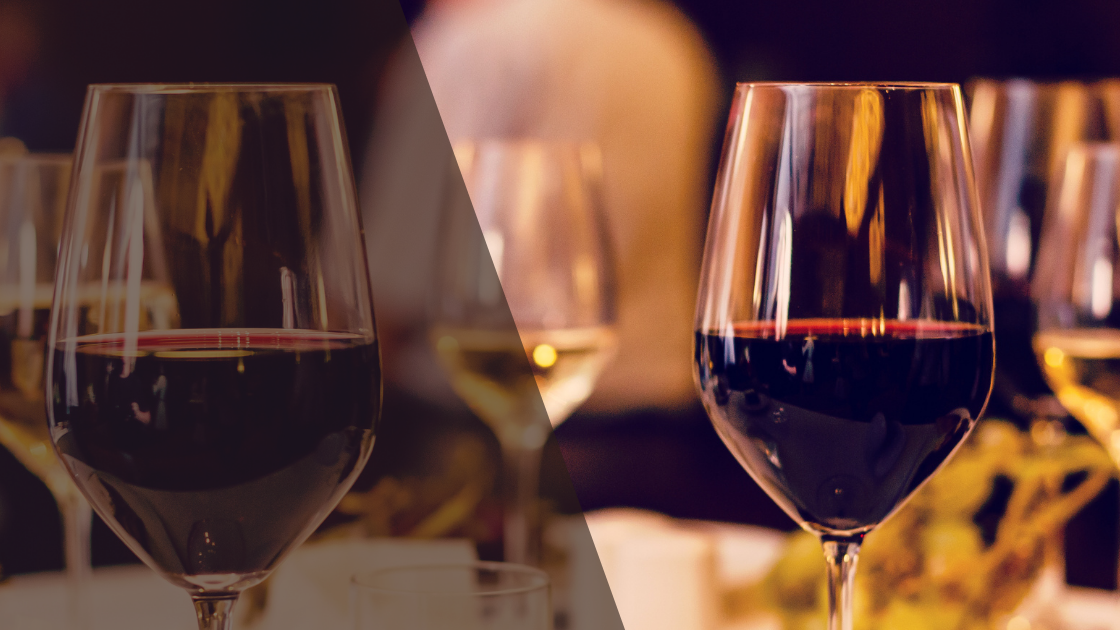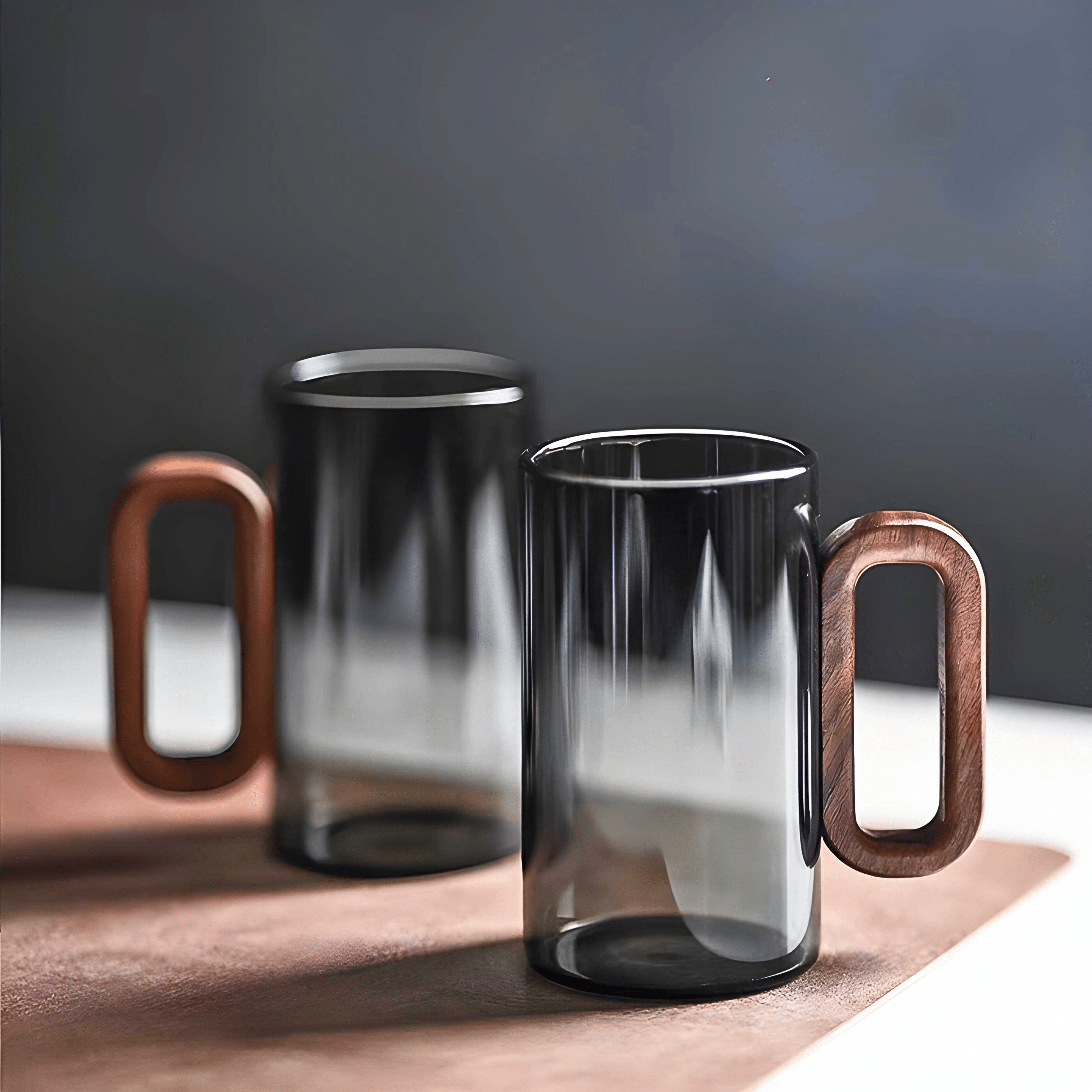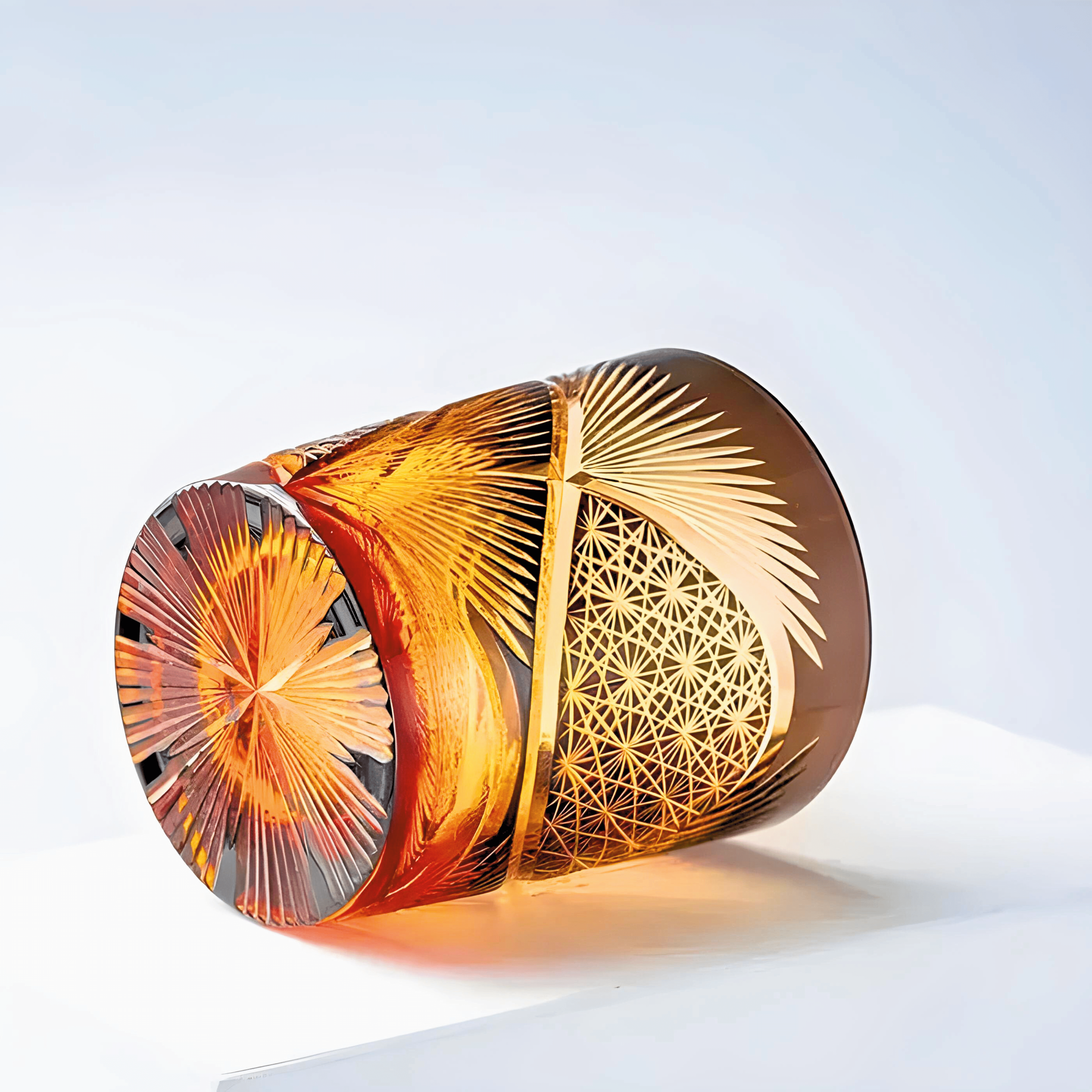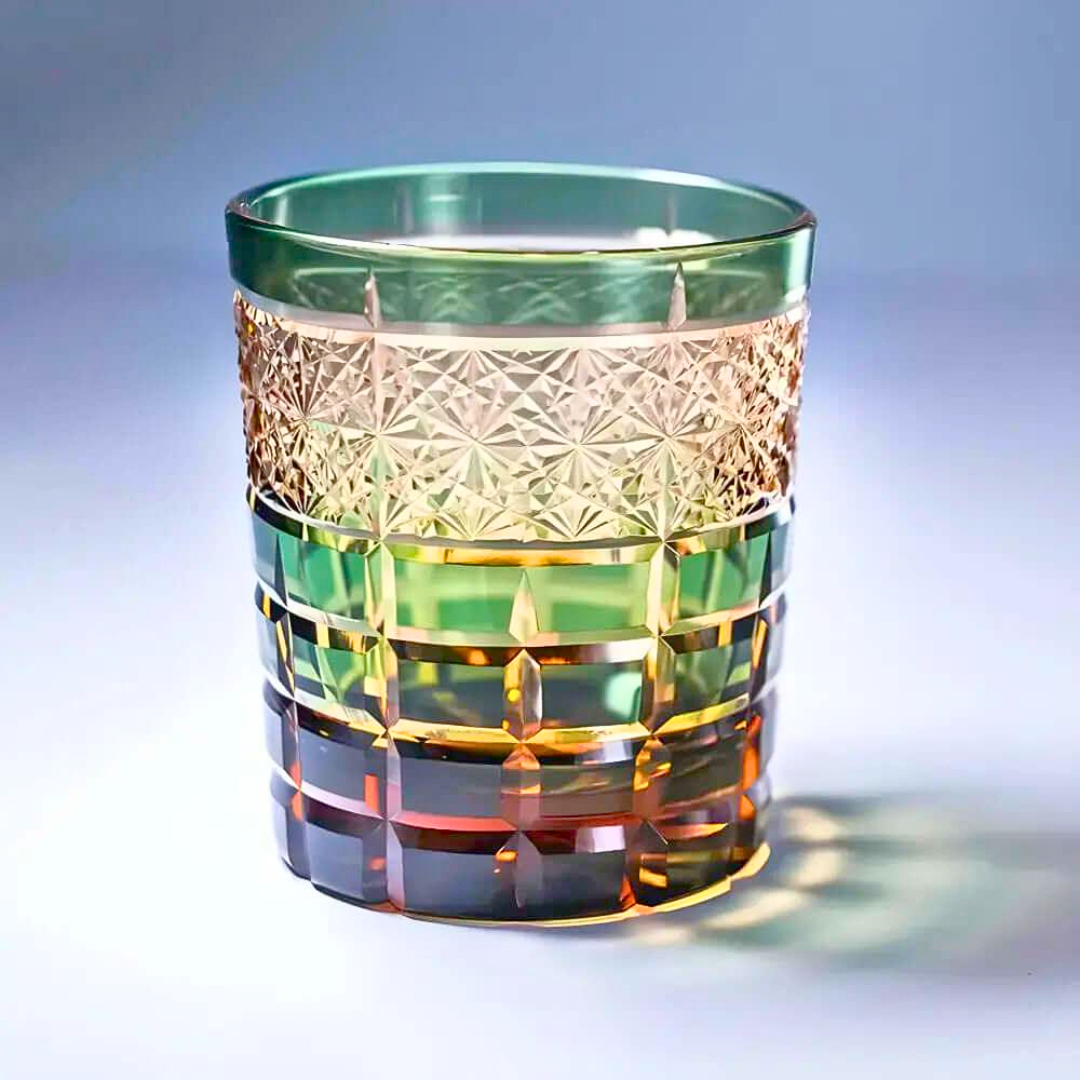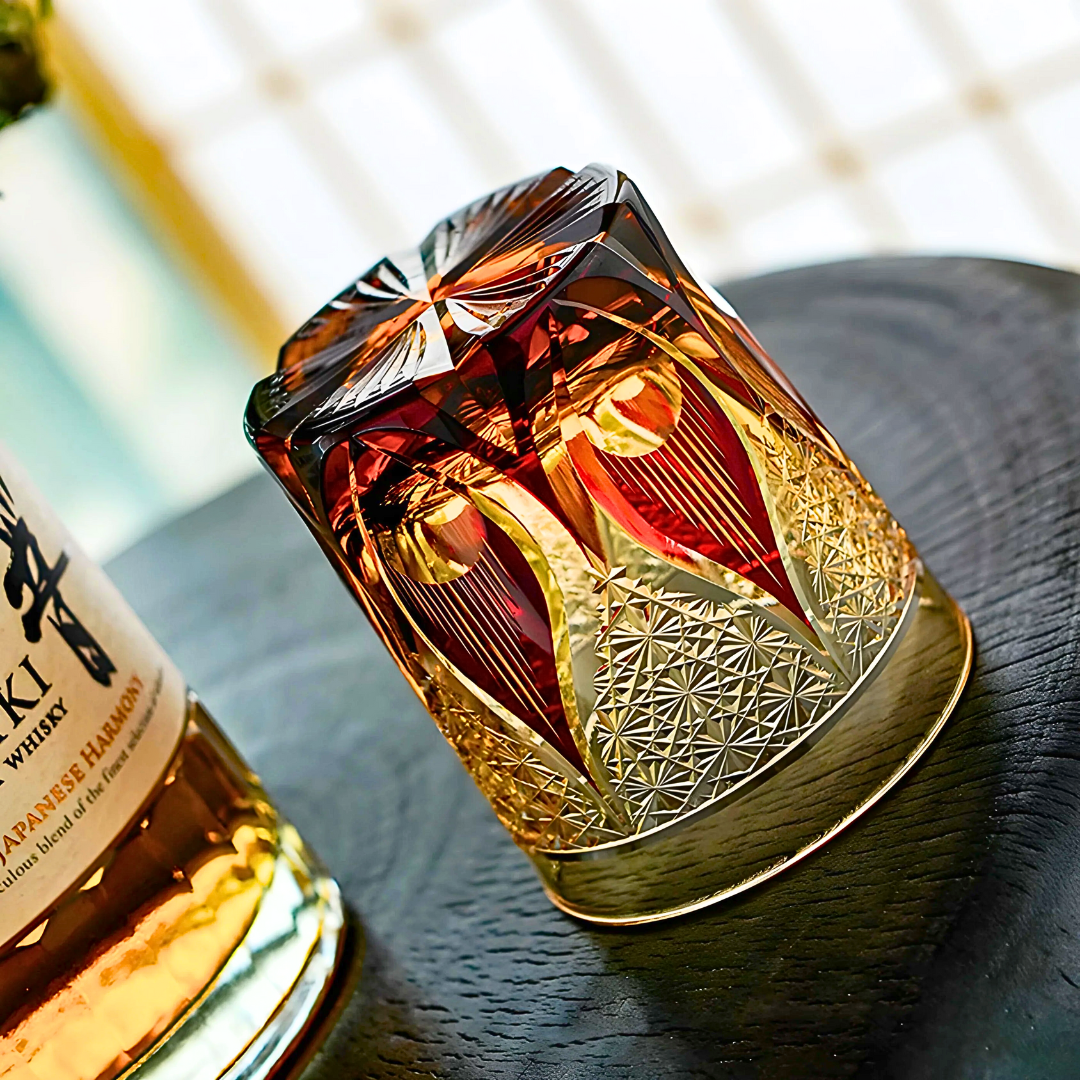In This Article
Introduction to Wine Glass Types
The shape and design of a wine glass can affect the way the wine smells, tastes, and even looks. Understanding the different types of wine glasses available can help you select the perfect vessels to enhance your enjoyment of various wines.
There are several factors to consider when choosing a wine glass, including the shape, size, and material. Each of these elements plays a role in enhancing the aromas and flavors of the wine. Let's explore some common wine glass types and their characteristics.
1. Red Wine Glasses
Red wine glasses typically have a larger bowl and a wider opening compared to other types of wine glasses. The large bowl allows for more contact between the wine and the air, allowing the wine to breathe and the aromas to develop. The wider opening also helps to enhance the wine's flavors, allowing them to reach the drinker's nose.
2. White Wine Glasses
White wine glasses generally have a smaller bowl and a more narrow opening compared to red wine glasses. The smaller bowl helps to preserve the wine's temperature, preventing it from warming up too quickly. Additionally, the narrower opening helps to concentrate the wine's aromas, allowing the drinker to fully experience the delicate nuances of white wines.
3. Sparkling Wine Glasses
Sparkling wine glasses, such as Champagne flutes, are designed to enhance the effervescence and visual appeal of sparkling wines. These glasses have a tall, narrow shape that helps to preserve the bubbles and showcase the streams of fizz. The narrow opening also helps to concentrate the aromas, and the elongated stem offers an elegant way to hold the glass while sipping the sparkling wine.
4. Dessert Wine Glasses
Dessert wines, which are often sweeter and more concentrated in flavor, are best enjoyed in smaller glasses. These glasses typically have a smaller bowl and a narrow opening, allowing the aromas to be more concentrated and the smaller serving size to be appreciated.
5. Universal Wine Glasses
For those who prefer versatility, universal wine glasses are a popular choice. These glasses are designed to accommodate various types of wine, making them suitable for both red and white wines. Universal wine glasses typically have a medium-sized bowl and a gently tapered opening, striking a balance between enhancing the aromas and flavors of both red and white wines.
In conclusion, selecting the right wine glass can greatly enhance your wine tasting experience. By understanding the characteristics of different wine glass types, you can choose the appropriate vessel for each type of wine to fully appreciate its unique qualities. Whether you opt for a red wine glass, white wine glass, sparkling wine glass, dessert wine glass, or a versatile universal wine glass, investing in quality glassware can elevate your enjoyment of wine to a whole new level. So raise your glass and toast to the art of choosing the perfect wine glass!
The Importance of Choosing the Right Wine Glass
Selecting the appropriate wine glass may seem like a trivial detail, but it can significantly enhance your overall wine-drinking experience. The right glass can amplify the aromas and flavors of the wine, allowing you to fully appreciate its nuances. Here are some reasons why choosing the right wine glass is important:
Aroma Enhancement: The shape and design of a wine glass can greatly influence how the aroma of the wine is perceived. The bowl of the glass collects and concentrates the aromas, creating a sensory experience that enhances the wine's fragrance. A well-designed wine glass with a tapered rim will deliver these aromas directly to your nose, making the wine more enjoyable.
Flavor Prowess: Just like the aromas, the shape and size of the glass can also impact the taste of the wine. The right wine glass can help direct the wine to the specific areas of the tongue that are sensitive to different taste sensations. For example, a wide-bowled glass can release the wine to the front and sides of the tongue, enhancing the perception of sweetness, while a narrow-bowled glass can direct the wine to the back of the tongue, emphasizing the perception of acidity.
Visual Appreciation: Aesthetics play a role in the overall experience of enjoying wine. The shape of the glass affects how the wine looks, allowing you to fully appreciate its color and clarity. A glass with a wide bowl and a tapering rim helps better showcase the wine's hue, while a narrow glass concentrates the visual experience, intensifying the wine's color variations.
Ergonomics: The shape and weight of a wine glass also impact how it feels in your hand. A well-balanced glass with a comfortable stem and a steady base can enhance your grip and make the wine-drinking experience more pleasurable. It also allows you to handle the glass without touching the bowl, preventing unwanted heat transfer that could affect the wine's temperature.
Overall, the right wine glass is an essential component in fully enjoying and appreciating the characteristics of the wine. Whether it's the aromas, flavors, visual appeal, or the overall feel, a well-chosen glass can make a remarkable difference in your wine-drinking experience. Invest in quality wine glasses that are specifically designed for different wine varietals to unlock the full potential of your favorite wines.
Understanding Different Wine Glass Shapes
Wine glasses come in various shapes and sizes, each designed to enhance the characteristics and flavors of different types of wine. Understanding the different wine glass shapes can greatly enhance your wine tasting experience and maximize the enjoyment of your favorite wines.
-
Red Wine Glasses:
- Red wine glasses are typically characterized by their larger, rounder bowls and wider openings.
- The wide bowl allows for a greater surface area of the wine to be exposed to air, allowing the aromas and flavors to develop fully.
- The larger opening helps to direct the wine to the tip of the tongue, where the sweetness of the wine is most prominently detected.
-
White Wine Glasses:
- White wine glasses are generally smaller and narrower compared to red wine glasses.
- The smaller bowl helps to concentrate the delicate aromas and flavors of white wines, enhancing their subtlety.
- The narrower opening focuses the wine to the mid-palate, allowing the crisp acidity and refreshing characteristics of white wines to shine.
-
Sparkling Wine Glasses:
- Sparkling wine glasses, such as champagne flutes, have tall and narrow bowls with a thin rim.
- The elongated shape helps to preserve the effervescence and showcase the mesmerizing bubbles in the wine.
- The small surface area reduces the contact with air, ensuring that the sparkling wine stays bubbly for longer.
-
Fortified Wine Glasses:
- Fortified wines like Port and Sherry are often enjoyed in smaller glasses with a narrower shape.
- These glasses concentrate the aromas and flavors of the fortified wine, allowing its complexity and richness to be fully appreciated.
-
Universal Wine Glasses:
- Universal wine glasses have become increasingly popular, designed to be versatile enough to accommodate various wine styles.
- These glasses typically have a slightly wider bowl, allowing both red and white wines to breathe and develop aromas.
- The shape is often designed to direct the wine to specific taste buds on the palate, enhancing the flavor profile of different wines.
Understanding the different wine glass shapes is crucial for experiencing the nuances of various wines. Using the appropriate glassware will elevate your wine tasting experience, allowing you to fully appreciate the characteristics, aromas, and flavors of each wine type.
Red Wine Glasses: Characteristics and Designs
Red wine glasses are specifically designed to enhance the drinking experience of red wines. These glasses have distinct characteristics and designs that are specially tailored to bring out the best in red wine flavors, aromas, and presentation.
Here are some key characteristics and designs of red wine glasses:
Bowl Shape: Red wine glasses typically have a wider bowl compared to other wine glasses. The large bowl allows for better aeration of the wine, which helps to release and intensify the aromas and flavors. The shape also allows for better swirling, which can further enhance the wine's bouquet.
Tapered Rim: Red wine glasses have a slightly tapered rim that helps direct the wine to the middle of the tongue when sipped. This allows the flavors to be fully experienced and prevents the wine from overwhelming the palate.
Tall Stem: Red wine glasses often have a tall stem, which serves multiple purposes. First, it allows for easy swirling without warming the wine by direct contact with the hand. Second, it helps to visually showcase the wine's rich color and texture. Finally, the stem prevents fingerprints on the bowl, ensuring the clarity of the wine.
Capacity: Red wine glasses usually have a larger capacity compared to white wine glasses. This provides ample space for the wine to breathe and fully develop its flavors. Additionally, the larger capacity allows for better swirling and swirling without the risk of spillage.
Material: Red wine glasses are commonly made from glass or crystal. Both materials provide excellent clarity and do not interfere with the wine's taste. Crystal glasses, in particular, are known for their elegance, thinness, and ability to enhance the wine's aromas.
Design Variations: Red wine glasses come in various designs to cater to different types of red wines. For example, Bordeaux glasses have a tall, broad bowl to accommodate wines like Cabernet Sauvignon and Merlot. Burgundy glasses, on the other hand, have a wider bowl to enhance the aromas of Pinot Noir and other delicate red varieties.
Specialized Features: Some red wine glasses have specialized features to further enhance the drinking experience. This may include an etched pattern on the base of the glass to create a stream of bubbles, which can release additional aromas. Other glasses may have a wider base for better aeration or a spout for controlled pouring.
It's important to note that while red wine glasses have specific characteristics and designs, personal preference should also be considered. Experimenting with different glass shapes and sizes can help you find the perfect red wine glass that suits your taste and enhances your enjoyment of red wines.
White Wine Glasses: Characteristics and Designs
When it comes to white wine glasses, there are certain characteristics and designs that are specifically tailored to enhance the taste, aroma, and overall experience of enjoying white wines.
Characteristics of White Wine Glasses
Narrower Bowl: White wine glasses typically have a narrower bowl compared to red wine glasses. This helps to maintain the cooler temperature of white wines, as it minimizes the surface area exposed to air.
Smaller Size: White wine glasses are usually smaller in size compared to red wine glasses. This is because white wines are often served in smaller portions and are meant to be consumed at a faster pace.
Tapered Rim: The rim of a white wine glass is often slightly tapered inward. This helps to concentrate the aromas of white wines and deliver them directly to the nose for a more pronounced and enjoyable sensory experience.
Thin Glass: White wine glasses are typically made from thinner glass compared to red wine glasses. This allows for better heat transfer from the hand to the wine, ensuring that the wine remains at the optimal serving temperature.
Designs of White Wine Glasses
There are several popular designs of white wine glasses, each with its own unique features and advantages:
Flute: The flute design is commonly used for sparkling white wines, such as Champagne or Prosecco. It features a tall, narrow bowl with a tapered rim that helps to preserve the carbonation and highlight the delicate bubbles of the wine.
U-shape: The U-shape design is a classic choice for white wines. It has a slightly wider bowl and a more rounded shape compared to the flute. This design allows for better aeration and surface area exposure, enhancing the aromatic profile of the wine.
Tulip: The tulip design is another popular choice for white wines. It has a curved bowl that tapers inwards towards the rim, similar to the shape of a tulip flower. This design helps to concentrate the aromas and flavors of the wine, providing a more intense and complex tasting experience.
Stemless: Stemless white wine glasses have gained popularity in recent years. They offer a more modern and contemporary look, and their compact size makes them suitable for casual gatherings and outdoor events. However, it is important to note that the lack of a stem can cause the wine to warm up quickly from the heat of the hand.
In conclusion, white wine glasses are specifically designed to enhance the characteristics of white wines. The narrower bowl, smaller size, tapered rim, and thin glass all contribute to a more enjoyable sensory experience. With various designs to choose from, such as the flute, U-shape, tulip, and stemless, wine enthusiasts can select the one that best suits their preferences and enhances their enjoyment of white wines.
Sparkling Wine Glasses: Characteristics and Designs
Sparkling wine glasses, also known as champagne flutes or champagne coupes, have specific characteristics and designs that enhance the enjoyment of these effervescent beverages. Here are some key features to consider when choosing the perfect sparkling wine glass:
Tall and Narrow Shape: Sparkling wine glasses are designed with a tall and narrow shape to preserve the bubbles and concentrate the aromas. The elongated design helps to maintain the carbonation and showcase the bubbles rising to the top of the glass, creating a visually stunning experience.
Tapered Rim: The rims of sparkling wine glasses are often tapered inward. This design directs the aromas towards your nose, allowing you to fully appreciate the delicate bouquet of the wine. It also helps to concentrate the flavors, providing a more pronounced taste.
Thin and Lightweight: Sparkling wine glasses are typically made with thin and lightweight glass. This allows for a fine and delicate drinking experience, enhancing the elegance of the wine. It also allows you to appreciate the texture and mouthfeel of the bubbles on your palate.
Long Stem: The long stem of a sparkling wine glass serves multiple purposes. First, it allows you to hold the glass without warming the wine with your hand. This helps to maintain its desired temperature. Secondly, the stem adds a touch of elegance and sophistication to the overall presentation of the wine.
Tulip/Coupe Design: There are two main designs for sparkling wine glasses: the traditional tulip shape and the vintage-inspired coupe style. The tulip design is narrower at the top and gradually widens towards the base, emphasizing the bubbles and aromas. The coupe design, with its shallow and wide bowl, showcases the beauty of the wine and adds a retro charm to the drinking experience.
Material: Sparkling wine glasses are typically made of glass, which is the preferred material for showcasing the wine's color and clarity. However, keep in mind that there are also variations available in crystal or lead-free crystal, which can enhance the sensory experience and offer greater durability.
When selecting a sparkling wine glass, consider your personal preferences and the occasion. Tulip-shaped glasses are often recommended for more formal settings, while the coupe glasses are popular for celebratory events. Ultimately, choose a glass that best accentuates the wine's aromas and bubbles, allowing you to savor every sip.
Remember, a well-chosen sparkling wine glass can make all the difference in experiencing the full range of flavors and aromas that these delightful beverages have to offer. Cheers!
Other Wine Glass Types: Dessert Wine, Fortified Wine, and Rosé Glasses
In addition to the standard red and white wine glasses, there are a few other wine glass types that are specifically designed for certain types of wines. These include dessert wine glasses, fortified wine glasses, and rosé glasses. Each of these glasses has unique characteristics that enhance the drinking experience and bring out the best in the wine being served.
Dessert Wine Glasses
Dessert wines, such as port, sherry, and late-harvest wines, have higher sugar content and more concentrated flavors than other types of wine. To fully appreciate the complexity and nuances of these sweet wines, a dessert wine glass is essential.
These glasses are smaller and narrower than regular wine glasses, which helps to concentrate the aromas and flavors. The smaller size also allows for smaller sips, as dessert wines are often sipped slowly and savored.
Fortified Wine Glasses
Fortified wines, such as Madeira, Marsala, and vermouth, have higher alcohol content due to the addition of spirits like brandy. These wines are known for their distinct flavors and aromas, and the right glass can help to enhance these characteristics.
Fortified wine glasses are similar in shape to standard wine glasses but are generally smaller. The small size helps to concentrate the aromas and allows for smaller sips to fully appreciate the complexity of the wine.
Rosé Glasses
Rosé wines have become increasingly popular in recent years, and with their rise in popularity, specialized rosé glasses have also emerged. These glasses are designed to enhance the delicate flavors and aromas of rosé wines. Typically, rosé glasses have a tapered shape and a slightly wider bowl than white wine glasses. The wider bowl allows for increased surface area, which helps to release the aroma and subtly accentuate the fruity and floral notes of the wine.
Choosing the right glass for your wine can make a significant difference in your overall wine-drinking experience. Whether you are enjoying a dessert wine, fortified wine, or rosé, investing in the appropriate glassware will allow you to fully appreciate and savor the unique characteristics of each wine.
Factors to Consider When Choosing a Wine Glass
Selecting the perfect wine glass is an important decision that can greatly enhance your wine-drinking experience. While there are numerous types and designs of wine glasses available, it's essential to consider the following factors to ensure you make the right choice:
Glass Shape: The shape of the wine glass has a significant effect on the wine's aroma and flavor. Different types of wine glasses, such as those designed for red, white, or sparkling wine, are specifically shaped to enhance the characteristics of each type. For example, a glass with a wider bowl and a large opening is ideal for red wines as it allows the wine to breathe and enhances its aroma.
Glass Material: Wine glasses can be made from various materials, including glass, crystal, or even plastic. While glass and crystal are preferred for wine tasting due to their clarity and ability to highlight the wine's color, plastic glasses are convenient for outdoor events or casual occasions. Glass and crystal are also more delicate and may require special care when cleaning and handling.
Size and Capacity: Consider the size and capacity of the wine glass based on your personal preference and the type of wine you intend to consume. Smaller glasses are suitable for tasting and allow you to appreciate the nuances of the wine. Larger glasses, on the other hand, are more suitable for full-bodied wines that benefit from aeration and swirling.
Stem or Stemless: Decide whether you prefer a traditional stemmed glass or a stemless design. Stemmed glasses are popular for their elegant appearance and allow you to hold the glass without affecting the wine's temperature. Stemless glasses, on the other hand, are more versatile and easier to store. However, they may transfer heat from your hand to the wine more quickly.
Price Range: Consider your budget when choosing wine glasses. Prices can vary based on factors like brand, material, and design. While investing in high-quality glasses, such as lead crystal, can enhance your wine experience, there are also affordable options available that can still provide a satisfactory drinking experience.
Occasion and Personal Style: Consider the occasion and your personal style when selecting a wine glass. Formal events may call for more traditional, elegant designs, whereas casual gatherings may be better suited for modern or eclectic options. Choose a glass that reflects your personal taste and complements the overall ambiance of the event or setting.
By taking these factors into account, you can make an informed decision and choose a wine glass that will enhance the enjoyment of your favorite wines. Remember, the right wine glass can truly elevate the sensory experience and allow you to appreciate the wine to its fullest potential.
Tips for Maintaining and Cleaning Wine Glasses
Proper maintenance and cleaning of wine glasses are crucial to preserve their quality and longevity. Here are some essential tips to help you maintain and clean your wine glasses effectively.
Handwashing is recommended: Although some wine glasses are labeled as dishwasher-safe, it is generally recommended to wash them by hand. Dishwasher detergents can be abrasive and may cause damage to delicate glassware over time. Therefore, handwashing is the safest option.
Use warm water: Fill your sink or a basin with warm water and mild dish soap. Avoid using hot water, as it can cause the glass to expand and potentially crack.
Gently clean the inside and outside: Use a soft sponge or a non-abrasive brush to clean both the inside and outside of the wine glass. Pay special attention to the bowl and rim where wine residues tend to accumulate.
Rinse thoroughly: After washing, rinse the wine glasses under warm water to remove any soap residue. Ensure that all soap is thoroughly rinsed off to prevent any lingering flavors.
Dry with a lint-free cloth: Use a lint-free cloth or a microfiber towel to gently dry the wine glasses. Avoid using regular kitchen towels as they may leave behind lint or fibers.
Polish with a microfiber cloth: For extra shine and to remove any water spots, gently polish each wine glass with a clean microfiber cloth. This will help to maintain their sparkling appearance.
Store properly: Store wine glasses in a safe and secure place, away from any potential hazards. Use stemware racks or padded storage boxes to prevent breakage and ensure proper storage.
Avoid touching the bowl: When handling wine glasses, try to hold them by the stem or the base rather than touching the bowl. This prevents any potential fingerprints, smudges, or oil transfer that may affect the clarity of the glass.
Handle with care: Treat wine glasses delicately to prevent chips, cracks, or breakage. Be mindful when placing them in the sink, while drying, or when storing to avoid accidental damage.
Regular inspection: Regularly inspect your wine glasses for any signs of damage, such as cracks or chips. If any damage is found, it is best to replace the glass to ensure optimum wine enjoyment.
By following these tips, you can maintain the quality and beauty of your wine glasses for a long time. Proper cleaning and care will ensure that each glass provides a flawless drinking experience with every sip of wine.
Conclusion: Enhancing the Wine Experience with the Right Glass
Selecting the appropriate wine glass for your favorite varietal is an art that can significantly enhance your overall wine-drinking experience. The shape, size, and design of the glass can have a profound impact on how the wine tastes, smells, and even looks. By understanding the different types of wine glasses and their specific purposes, you can ensure that you are getting the most out of every sip.
Firstly, it is crucial to consider the bowl shape of the wine glass. The bowl is the most important element as it affects the wine's aromas, flavors, and how the wine interacts with oxygen. For example, Bordeaux glasses with their tall and broad bowls are ideal for full-bodied red wines, allowing the wine to aerate and highlight its complex aromas. On the other hand, Burgundy glasses with their wide and round bowls are perfect for enhancing the delicate aromas and nuances of lighter-bodied reds.
The size of the glass also plays a vital role in the wine-drinking experience. Larger glasses allow for better aeration and can help the wine develop its full range of flavors and aromas. Smaller glasses, on the other hand, are often used for sparkling wines and dessert wines to maintain their effervescence and concentrate their aromas.
The design and material of the wine glass should also be taken into consideration. Crystal glassware, with its fine and thin construction, is often preferred due to its ability to showcase the wine's color, clarity, and brilliance. Additionally, the rim of the glass can affect the way the wine flows onto the palate. Glasses with a tapered and thin rim offer a seamless transition from glass to mouth, allowing for a more enjoyable tasting experience.
Ultimately, the right wine glass can elevate the pleasure of enjoying your favorite wines. By investing in a variety of wine glasses tailored to different styles and varietals, you can ensure that each wine is presented at its best. Whether you are a casual wine enthusiast or a connoisseur, choosing the right glassware can truly enhance the complexity and nuances of the wine, allowing you to fully appreciate and savor every sip.
